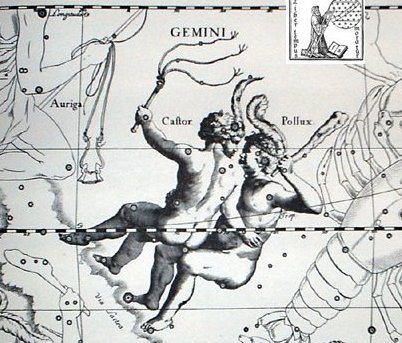5. Rei in Gregorian day 200 and at the heliacal rising of χ Carinae could indicate where the New Year is beginning:
"In Plato's Timaeus, it is explained that the two bands that form the soul of the world cross each other like the letter Χ." (Wikipedia) The K pattern agrees with the old Celtic year: ... The seventh tree is the oak, the tree of Zeus, Juppiter, Hercules, The Dagda (the chief of the elder Irish gods), Thor, and all the other Thundergods, Jehovah in so far as he was 'El', and Allah. The royalty of the oak-tree needs no enlarging upon: most people are familiar with the argument of Sir James Frazer's Golden Bough, which concerns the human sacrifice of the oak-king of Nemi on Midsummer Day. The fuel of the midsummer fires is always oak, the fire of Vesta at Rome was fed with oak, and the need-fire is always kindled in an oak-log. When Gwion writes in the Câd Goddeu, 'Stout Guardian of the door, His name in every tongue', he is saying that doors are customarily made of oak as the strongest and toughest wood and that 'Duir', the Beth-Luis-Nion name for 'Oak', means 'door' in many European languages including Old Goidelic dorus, Latin foris, Greek thura, and German tür, all derived from the Sanskrit Dwr, and that Daleth, the Hebrew letter D, means 'Door' - the 'l' being originally an 'r'. Midsummer is the flowering season of the oak, which is the tree of endurance and triumph, and like the ash is said to 'court the lightning flash'. Its roots are believed to extend as deep underground as its branches rise in the air - Virgil mentions this - which makes it emblematic of a god whose law runs both in Heaven and in the Underworld ... The month, which takes its name from Juppiter the oak-god, begins on June 10th and ends of July 7th. Midway comes St. John's Day, June 24th, the day on which the oak-king was sacrificially burned alive. The Celtic year was divided into two halves with the second half beginning in July, apparently after a seven-day wake, or funeral feast, in the oak-king's honour ... The 7-day wake was perhaps beginning with the death of 'Castor' (the winter year). A week had to be added to day 193 in order to reach day 400 / 2. 4 days added to the π glyph (3-14) leads to next π glyph, where 'July 22 translates to 22 / 7 and where evidently Saturn could be imagined to create a new year. This is where the manzil Alhena is beginning. The preceding manu rere at '8h does not allow light to enter from the front. The star Alhena (γ Gemini) was rising heliacally earlier, 104 days after equinox and in Gregorian day 184 (in manzil day 184 - 136 = 48). The bent tail Sign is basically the same as that at Antares in the G text:
... Almeisan, Almisan, Almeisam, and Almisam are from Al Maisan, the Proudly Marching One, its early Arabic name, which Al Firuzabadi, however, said was equally applicable to any bright star ... Riccioli called it Elhenaat, but Alhena is now generally given to it, from Al Han'ah, the 4th manzil, γ, μ, ν, η, and ξ, in the feet of the Twins. This word, usually translated a Brand, or Mark, on the right side of a camel's or horse's neck, was defined by Al Bīrūnī as Winding, as though the stars of this station were winding around each other, or curving from the central star; and they were Al Nuhātai, the dual form of Al Nuhāt, a Camel's Hump, itself a curved line ... Alhena marks the right foot of the Pollux figure, the foot in the shadows, where there are 12 days remaining to the heliacal rising of the Pollux star. With the perspective of Hevelius there are 3 feet in the shadows and 1 in the light - the opposite of the view from inside the celestial sphere.
I realize the necessity to add ξ ('djed') and ν Gemini to my star list. We cannot ignore any of the feet of the Twins. |








